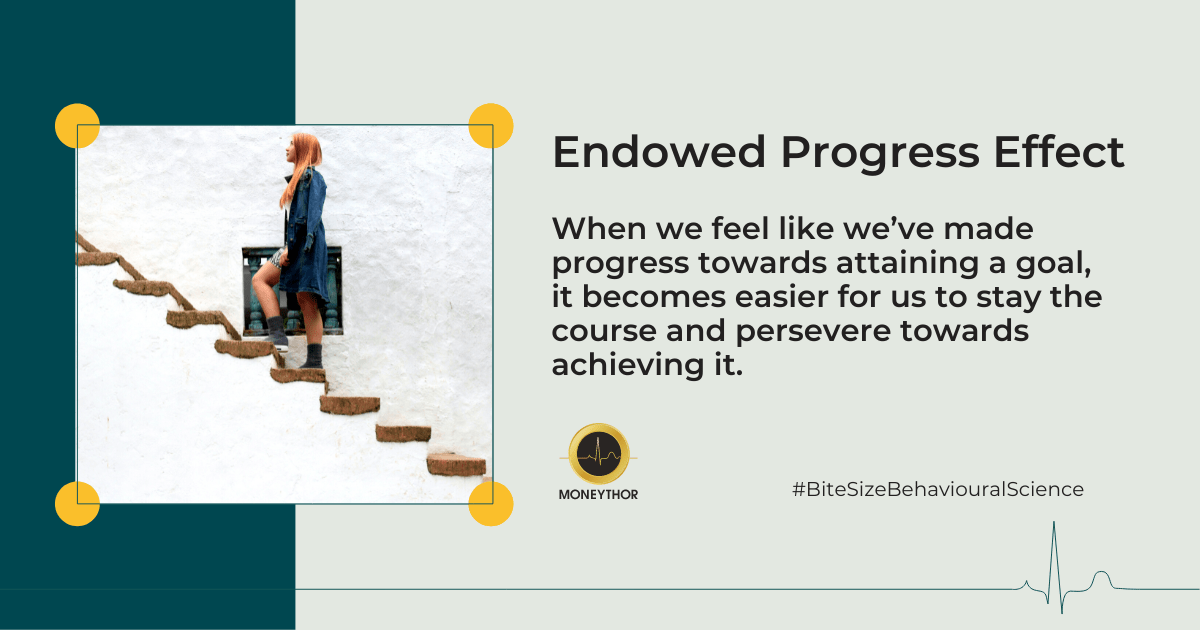To understand how the Endowed Progress Effect can be applied to banking use cases as an interesting tool to nudge customers in achieving their goals, let’s first imagine this: two people buy their morning coffee at the same café every day, but were both given a different loyalty card that allows them to redeem a free coffee upon completion.
The first person gets a 10-star card with no free stars and the second person receives a 12-star card with two free stars. Who do you think will be more motivated to achieve their free coffee?
If you guessed the second person, then you’ve made a similar assumption as most other people! Objectively, we understand that both cards require the same number of stars (10) to redeem a free coffee but the perceived head start that the second consumer got with their 2 free stars created an artificial sense of advancement towards the end goal. This phenomenon documented in a 2006 research (PDF) by Joseph C. Nunes and Xavier Drèze is known as the Endowed Progress Effect.
Why does it happen?
When we feel that progress has been made, it becomes easier to stay the course and persevere towards achieving the goal. As in the example above, by converting a goal that requires ten stars with two stars already awarded, the journey to completion is reframed as one that’s already in progress. This accelerates the likelihood of completion stemming from the aspiration to not waste the head start that was given in the first place. Therefore, endowed progress can be a very influential incentive for the completion of tasks.
How can banks harness the Endowed Progress Effect to help consumers develop better financial habits?
Savings goals with a head start
Acknowledgement of pre-existing progress can strongly influence future commitment and lock-ins, while progress without recognition can have an adverse effect on continued commitment. Whether the customer saves for a rainy day fund, for a purchase, a holiday or a longer-term retirement plan, these savings goals can be set up in a manner that shows customers a head start by presenting part of their existing account balance as an early contribution to their goal. This not only helps with bolstering the sense of return for their commitment, but also nudges them into contributing more.
Loyalty programs with initial advancement
And of course, traditional loyalty programs such as point-, voucher- or cashback-based spending campaigns or more modern ones leveraging gamification techniques applied to banking to reward digital activities can also benefit from the Endowed Progress Effect. Granting early points, stars or stamps to show that initial steps have already been completed may improve the users’ motivation to complete the campaigns’ objectives.
Focus on the progress, not the end goal
The more effort, time or money we’ve invested in a goal, the more likely we will want to keep it going. In the implementation of financial wellbeing or loyalty programmes, it is key ensure that users are always focused on how far they’ve come rather than how much farther they have to go. Visual contextual reminders at specific milestones in the journey (such as percentage-based thresholds or being on a streak of regular deposits) will also help with further motivation.
Conclusion
Financial institutions should consider the impact that the Endowed Progress Effect can have on consumers when designing their digital banking services and particularly their Personal Financial Management (PFM) tools, financial wellbeing journeys and loyalty programs. As consumers get closer to completion of their objectives, it is likely that they will try harder to achieve them, and so, a perceived head start ensure that they are less likely to abandon efforts.

